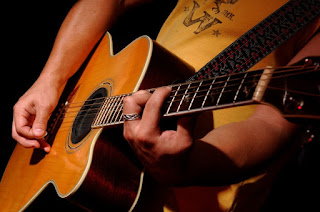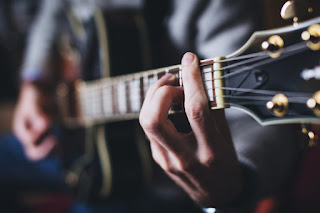Motivation II
Motivation is a
continuum, with amotivation on one extreme and intrinsic motivation on the
other. In between are four forms of extrinsic motivation that vary according to
regulation style, or driving force:
The next step up from amotivation is a form of extrinsic motivation called external regulation. This is when you’re doing something but only because you feel compelled by factors outside yourself – such as your parents or teacher. Beginning musicians do not persist long this way. When these external controlling factors stop pushing, learning also stops.
From here on, we start to see some ownership and increasing levels of autonomy.
Introjected regulation describes a partial internalization of drive. What defines success is set outside the musician (by parents and teachers) but it is then adopted internally. It’s still external control because the focus is on getting approval or achieving self-worth outside of oneself. It is a motivator and it can help a young musician persist, but it generally doesn’t last.
We start to move into autonomous motivation with identified regulation. This means higher effort, persistence through challenges, and better performance. Here practice and performance is fueled by the contributions the music makes to the musician’s personal goals and values. But it is the usefulness of the activity, not the interest in the activity itself that guides the behaviour. This isn’t bad, and it’s often necessary.
Integrated regulation, the most autonomous form of extrinsic motivation, is fully internalized in that the practice and performance are fully coordinated and in agreement with personal values and needs. There is still a distinction from intrinsic motivation in that the activity is still done to achieve something (an exam result, peer approval, a fee), as opposed to the sheer pleasure or enjoyment of it. When integrated, performing music is a part of who the person is.
Finally, we reach intrinsic motivation; the highest degree or strongest level of self-determined motivation. This is when we perform simply for enjoyment and the opportunity to learn and personally develop.
As parents and teachers who want to help young musicians become more motivated, we want to look at these four kinds of extrinsic motivation, because we are primary external influences. Anything we can do to increase a beginner musician’s autonomy, competence, and relatedness (see my previous blog) is sure to help their overall motivation.
Autonomy support, for example, might take the form of reinforcement of their choice of repertoire. An autonomy-supportive parent or teacher also offers practical assistance (an instrument, practice room, lessons). The idea is to always help students develop enjoyment and ownership of their performance.



Comments
Post a Comment